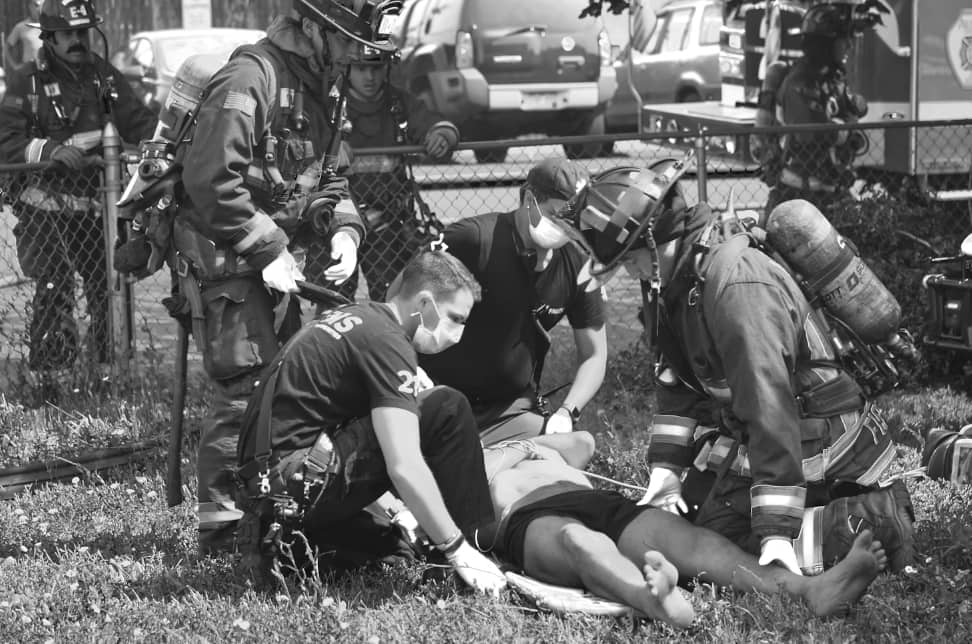Ever thought a fender-bender was no big deal? Think again. Rear-end collisions, often brushed off as minor mishaps, can unleash a Pandora’s box of health issues.
These sneaky injuries don’t always show up right away. They’re ticking time bombs that can explode days, weeks, or even months after the crash.
Why’s this so tricky? Well, these hidden hurts fool both doctors and crash victims alike. Left untreated, they can spiral into chronic nightmares. It’s high time we rethink how we size up these accidents.
We’re about to uncover the most frequently missed injuries from rear-end smash-ups.
Undetected Injuries in Posterior Vehicle Collisions

We’ll explore what causes them, how they show up, and what they might mean down the road.
Biomechanics of Posterior Collisions
Rear-end collisions unleash complex forces on vehicles and occupants. The key injury mechanism can be thought of as an “acceleration-deceleration syndrome.”
It occurs when the struck vehicle rapidly accelerates forward. This induces cervical hyperextension and flexion, damaging the entire spine and associated structures, as stated by the Mayo Clinic.
Contrary to popular belief, low-speed impacts can cause significant harm. Collisions at just 7 mph can result in soft tissue injuries. Additionally, the lack of visible vehicle damage doesn’t guarantee occupant safety, as modern bumpers often conceal structural deformation.
In 2022, rear-end collisions accounted for 17% of U.S. motor vehicle accidents, causing over 3,000 deaths. Urban areas see higher rates due to stop-and-go traffic.
A recent high-profile incident in Atlanta involving T-Pain, a singer, and a rapper, highlights these collisions’ prevalence and severity. The case, which involved alcohol impairment, highlights the importance of comprehensive post-incident evaluation.
This was just one of those instances when an accident came into the limelight. Georgia reported 1,700 vehicular fatalities in 2022, many from rear-end crashes. In the event of involvement in such an incident, seeking legal counsel is advisable.
These experts can help with gathering evidence and negotiating with insurance companies. According to Atlanta Personal Injury Law Firm, most do not even charge a penny if they fail to get you fair compensation for your injuries.
Such cases underscore the importance of thorough post-accident evaluation and seeking specialized legal counsel to navigate complex insurance negotiations and ensure fair compensation.
Whiplash and Related Disorders
These sets of wounds encompass a range of neck injuries stemming from rapid force on the cervical spine. Common symptoms include neck pain, stiffness, and reduced mobility.
The Cleveland Clinic states that women face a higher risk. This can be attributed to shorter stature, unique spinal structure, and less muscle mass than their male counterparts. These factors diminish shock absorption during impact.
Less obvious symptoms may include vertigo, ear ringing, and cognitive issues. Long-term effects can be profound, leading to chronic pain syndromes, disability, and reduced quality of life.
Neurological consequences, such as altered sensory processing and motor control deficits, may persist for extended periods.
Diagnostic challenges abound. Traditional imaging often fails to reveal soft tissue damage, risking underdiagnosis.
Advanced techniques like diffusion tensor imaging show promise but remain limited in clinical application.
Physicians must rely heavily on thorough physical exams and patient-reported symptoms, necessitating high suspicion to avoid overlooking these elusive yet impactful injuries.
Brain Trauma in Rear-End Collisions
Traumatic brain injuries in rear-end crashes occur through coup-contrecoup mechanisms. The brain collides with the front skull and then rebounds against the back.
This causes potential axonal shearing and microstructural damage, even without direct head impact.
Subtle cognitive changes may include attention, memory, and executive function difficulties. Patients often report mental fog or slowed processing.
Emotional changes can manifest as irritability or anxiety. These symptoms may be mistakenly attributed to stress or dismissed as temporary, leading to underdiagnosis.
Early detection is crucial for optimal outcomes. Neuropsychological testing can reveal hidden cognitive deficits. Advanced neuroimaging may identify white matter abnormalities. P
rompt intervention, including cognitive rehabilitation and symptom management, can improve long-term prognosis.
Thoracic Outlet Syndrome (TOS)
Rear-end collisions can trigger a complex condition where vital nerves and blood vessels get squeezed as they pass through the chest’s upper opening.
This syndrome occurs when sudden neck jerking causes muscle spasms or shifts the collarbone, pinching the brachial plexus. Sometimes, the topmost rib gets pushed up or cracks, further narrowing this crucial passageway.
Symptoms vary wildly. Some folks feel tingling, weakness, or shooting arm pain. Others might notice pale, bluish, or swollen limbs. Many grapple with both nerve and blood flow issues, making the diagnosis a real head-scratcher.
Treatment runs the gamut from gentle to drastic. Most doctors start with physical therapy to fix posture and stretch tight muscles.
Botox shots can offer a temporary fix by loosening problem muscles. When all else fails, surgery to remove the first rib or slice through certain muscles might be on the table.
Catching this tricky condition early is key. If left unchecked, it can lead to lasting nerve damage or serious blood flow problems.
That’s why a team of specialists—from brain docs to blood vessel surgeons—often needs to put their heads together for the best results.
FAQs:
- 1. Can I fully recover from injuries sustained in a rear-end collision?
Recovery timelines vary based on injury severity. While many individuals recover fully, others may experience chronic pain or limitations. Early diagnosis and treatment are crucial for optimal outcomes. Persistent symptoms warrant further medical evaluation.
- 2. What are the signs of a serious injury after a rear-end collision?
Severe headaches, dizziness, confusion, memory problems, difficulty concentrating, numbness or tingling in extremities, and persistent pain are potential indicators of serious injuries. Seek immediate medical attention if you experience any of these symptoms.
- 3. Should I consult a lawyer after a rear-end collision?
Consulting with a personal injury attorney is advisable, especially if you’ve sustained significant injuries or the accident was caused by another driver’s negligence. A lawyer can help navigate complex legal processes, protect your rights, and seek appropriate compensation.
Rear-end collisions often conceal a complex array of injuries that can significantly impact victims’ lives. What may seem like a minor fender bender can lead to long-term health issues.
Understanding the potential consequences and seeking timely medical attention is crucial for optimal recovery. By shedding light on these often-overlooked injuries, we aim to empower individuals to advocate for their health and well-being.
Remember, prioritizing safety on the road and being aware of potential risks can significantly impact the outcome of a collision.
Also Check: Are All AFFF Groundwater Pollution Cases Settled



